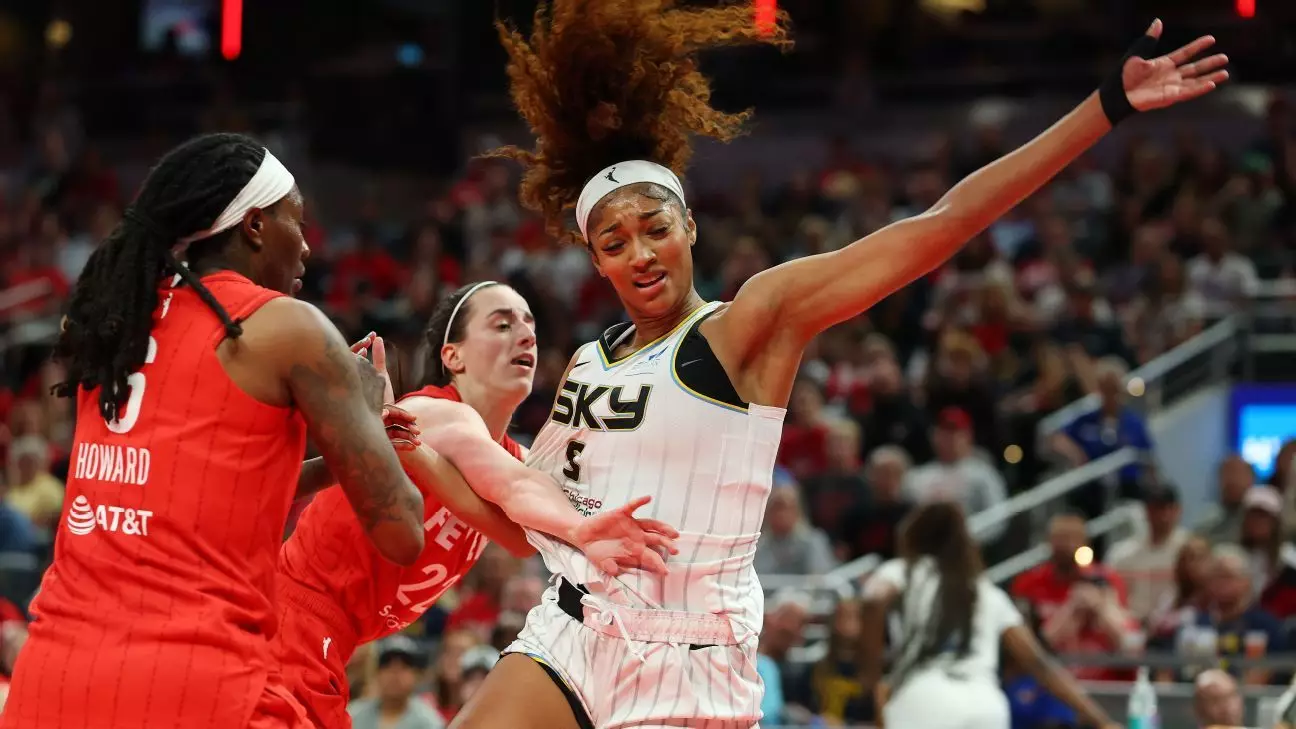In an age where progress is continually being claimed in the fight against racism, recent events in the Women’s National Basketball Association (WNBA) have cast a dark shadow over this narrative. Following an incident between stars Angel Reese and Caitlin Clark during a game between the Chicago Sky and Indiana Fever, it became painfully clear that even in the realm of competitive sports, the specter of hateful behavior still looms large. The WNBA’s response to allegations of “hateful fan comments” directed at Reese highlights an epidemic that persists in both society at large and the world of sports. The struggle against discrimination is overshadowed by an uncomfortable truth: it is still a major issue that demands immediate attention.
The Role of Sports in Society
To argue that sports should be a sanctuary free from hate would be an understatement. Athletes often find themselves in the spotlight, representing not just their teams but broader societal values. The WNBA’s message condemning racism and discrimination is a necessary reminder of the responsibilities that come with fame and platform. Athletes like Reese and Clark have the potential to influence millions, yet they still grapple with the ugliness of human nature manifested through fan hostility. It is essential for the WNBA, as a prominent league, to take a stand not merely as a reaction to an immediate crisis but as part of a proactive and sustained effort to foster inclusivity and respect.
The Incident Breakdown
The game unfolded with high stakes and heightened emotions, notably when Clark’s flagrant foul triggered a reaction from Reese. While it was an intensely competitive moment, there was far more than just a miscalculated basketball play at stake. When the referees assessed penalties, the atmosphere thickened with tension, culminating in what too often becomes a familiar scene: fans unleashing vitriol from the stands. Reese’s subsequent booing transformed a sporting event into a hostile environment. The intensity of the emotions running through Gainbridge Fieldhouse was palpable. What should have been a thrilling basketball encounter morphed into a stark reminder of how quickly sports can veer away from healthy competition into ugliness.
Institutional Response and Accountability
The WNBA’s “No Space for Hate” campaign is a critical initiative that underscores the league’s recognition of the problem at hand. However, it begs the question: are words enough? While the WNBA and the players’ association have voiced their outrage and determination to combat such behavior, implementation is key. The league must ensure that it doesn’t just investigate these incidents but also enforces measures that cultivate healthy, welcoming environments both in-person and online. The threat of racism cannot be brushed aside, but rather should be eradicated with an iron-clad policy that fosters accountability.
Fan Responsibility
The real challenge lies with fans, who must engage in self-reflection and embrace their shared responsibility to create an environment that is zero-tolerance for hate. Just as athletes are held accountable for their actions on the court, so too must fans be compelled to recognize their influence. In stands filled with passionate supporters, words can cut deeply, and thus a community of fans must unite against disparaging comments and actions. Support for players should never come at the expense of respect and dignity for all involved in the game.
The Path Forward
Moving forward, the WNBA has an opportunity to lead not just in the realm of sports but also in societal progress. It is time that leagues take tangible actions against hate and discrimination, reinforcing that sports can serve as a unifying force. As WNBA Commissioner Cathy Engelbert stated, it is imperative to fill arenas with “energy and fandom—not hate and vitriol.” Only by confronting these realities head-on can we hope to transform sporting arenas into the safe and empowering spaces they have the potential to be. In doing so, the WNBA not only uplifts its own reputation but also paves the way for other institutions to follow suit in the march toward equality and justice in every corner of society.


Leave a Reply